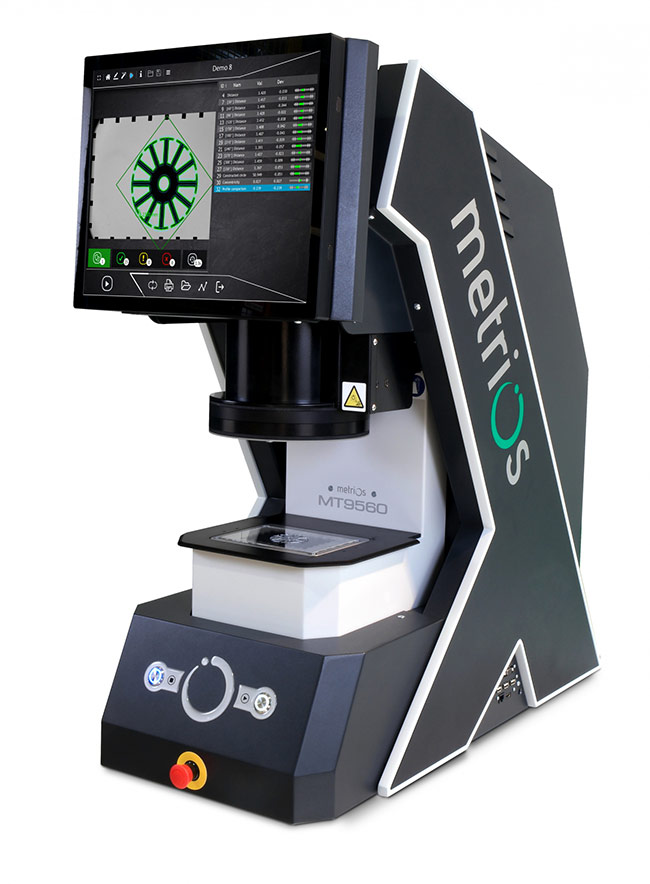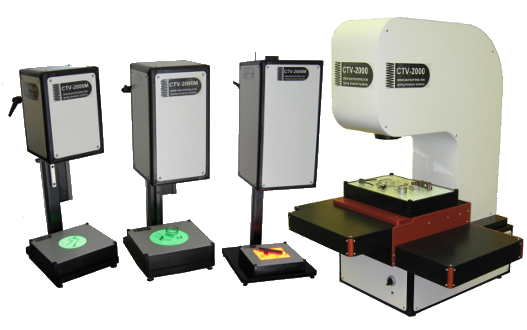How optical measurement system accuracy is transforming industrial quality assurance
Wiki Article
The Function of Optical Measurement Equipments ahead of time Width Techniques
Optical dimension systems have actually transformed width, bringing a degree of accuracy that was once unbelievable. You could be shocked to discover just how these technologies, based upon fundamental principles like representation and interference, are applied across numerous industries. Their non-contact abilities not only improve accuracy however also simplify processes. As you check out further, you'll discover just how these systems are forming the future of measurement and quality assurance.The Advancement of Assessment: A Historical Perspective
As you explore the history of assessment, you'll discover that its development shows humanity's pursuit for accuracy and standardization. From ancient worlds using body parts as systems of dimension to the growth of standard weights and steps, each step shows our need for precision. The Egyptians built the pyramids utilizing exact dimensions, while the Romans progressed engineering with their advanced measuring tools.Throughout the Renaissance, clinical developments shifted the focus towards a lot more empirical methods, leading the way for modern-day width. The introduction of the statistics system in the late 18th century noted a significant landmark, establishing global criteria. Throughout the 20th century, technical improvements even more changed assessment, making it possible for highly precise measurements in different areas.
Today, assessment continues to progress, incorporating digital technology and automation. This background highlights not simply the significance of measurement but additionally our ruthless quest of enhancing precision and consistency in our progressively intricate globe.
Principles of Optical Measurement Solutions
Comprehending the concepts behind optical measurement systems is vital for precise results in width. You'll wish to take into consideration fundamental optical concepts, measurement precision variables, and efficient system calibration methods. Each of these components plays a vital function in ensuring your measurements are reputable and specific.Basic Optical Principles
While checking out optical measurement systems, you'll come across basic optical principles that form the backbone of precise information procurement. Light acts in predictable methods, and recognizing these behaviors-- like diffraction, refraction, and reflection-- is important for reliable measurements. You'll use lenses and mirrors to manipulate light and concentrate it onto your target, making sure accuracy in your analyses. Furthermore, the wave nature of light allows for interference patterns, which can improve dimension resolution. Polarization can likewise play a crucial duty in distinguishing signal from noise, boosting the quality of your results. By mastering these principles, you'll be furnished to utilize optical innovations successfully, paving the means for advancements in assessment and ensuring your measurements are both trustworthy and repeatable.Measurement Precision Elements
To accomplish high dimension precision in optical systems, numerous elements come right into play, influencing the integrity of your outcomes. Top notch lenses and detectors decrease aberrations and sound, ensuring your dimensions are precise. By addressing these aspects, you can enhance the general performance of your optical measurement systems, leading to even more dependable and exact outcomes in your width applications.System Calibration Methods
Achieving high measurement precision is just part of the formula; appropriate system calibration strategies are equally essential in optical dimension systems. Next off, employ well-known measurements to confirm the system's outcome and make essential corrections. With these techniques, you'll boost the integrity of your optical measurement system.
Secret Technologies Behind Optical Measurement
Optical measurement systems rely upon a number of key technologies that enhance precision and efficiency in metrology. One vital innovation is interferometry, which makes use of the disturbance of light waves to gauge tiny displacements and surface area abnormalities with severe accuracy. You'll additionally locate laser scanning systems, which capture comprehensive 3D data of objects quickly, making them important for dimensional evaluation.Additionally, CCD and CMOS sensing units play a significant duty in converting light right into electric signals, enabling high-resolution imaging and exact measurements. Advanced algorithms for photo handling further improve measurement accuracy by examining information in real time, filtering out sound and enhancing functions.
Lastly, optical fiber supply versatility and the capability to measure in hard environments while maintaining signal stability. By leveraging these modern technologies, you can achieve remarkable cause your metrology jobs, ensuring that your measurements are both trustworthy and exact.
Applications of Optical Dimension in Industry
As sectors progressively demand precision and efficiency, the applications of optical dimension systems have come to be important across numerous fields. In production, these systems aid you monitor dimensions and resistances in real-time, guaranteeing quality assurance without lengthy manual checks. In the auto market, optical dimensions aid in lining up components with precision, boosting safety and security and efficiency.In electronic devices, you're utilizing optical methods to inspect min functions on motherboard, identifying problems that might bring about failings. The aerospace field take advantage of non-destructive screening techniques, enabling you to assess products and elements without jeopardizing their honesty.
Optical measurement additionally plays an important function in textiles, making sure textile measurements fulfill exact specs. optical measurement system. With their capacity to supply basics high-resolution data promptly, these systems encourage you to make educated choices, enhance processes, and inevitably drive advancement across your market
Enhancing Precision and Effectiveness in Dimensions
When you think of enhancing precision in measurements, accuracy in your dimension strategies is important. By improving these processes, you can accomplish quicker results without compromising quality. Let's explore how embracing sophisticated optical measurement systems can elevate both precision and performance in your job.Accuracy in Dimension Techniques
Precision in dimension strategies is vital for achieving dependable cause metrology, specifically considering that small disparities can bring about considerable mistakes. By using advanced optical measurement systems, you can improve the accuracy of your dimensions. These systems offer high-resolution information that help you spot even the slightest variants in dimensions. When you embrace these innovations, you lessen uncertainties and boost repeatability in your processes. On top of that, specific dimensions allow you to maintain top quality control, making certain that items fulfill rigid requirements. This not only boosts your integrity yet likewise improves customer complete satisfaction. Purchasing accuracy dimension tools inevitably brings about boosted effectiveness, reduced waste, and maximized production cycles. Accepting these techniques will transform your approach to metrology, generating impressive results.Simplifying Measurement Procedures
To improve accuracy and performance in measurements, enhancing your measurement processes is vital. Start by embracing optical dimension systems that provide real-time data, decreasing the moment spent on manual recording. These systems frequently incorporate seamlessly with existing software application, permitting you to automate data collection and evaluation.Following, systematize your measurement protocols. By carrying out regular procedures, you minimize irregularity and enhance repeatability. Don't forget to regularly calibrate your devices to ensure its accuracy.

The Influence of Optical Measurement on Research Study and Advancement
As scientists endeavor to push the limits of advancement, optical dimension systems have actually become vital devices in the development process. These systems offer you with exact, real-time information that boosts your capacity to analyze complex materials and frameworks. In numerous areas, from biotechnology to aerospace, you depend on optical dimensions to improve and enhance styles product performance.
With high-resolution imaging and non-contact techniques, you can lessen example disruption, permitting more precise results. This capability to catch minute details increases your R&D cycle, allowing you repeat styles swiftly and successfully. In addition, optical dimension cultivates cooperation throughout self-controls, as the data created is usually quickly interpretable and shareable.
Ultimately, integrating optical dimension systems right into your research not only enhances performance however likewise deepens your understanding of the sensations you research study. By leveraging these innovative More hints techniques, you're better geared up to innovate and remain in advance in a competitive landscape.
Future Fads in Optical Measurement Solutions
With the rapid improvement of innovation, you're most likely to see considerable shifts in optical measurement systems that will redefine their application across numerous industries. You'll observe an approach enhanced automation and assimilation of expert system, enabling real-time data evaluation and enhanced precision. Miniaturization is another pattern; portable tools will certainly enable measurements in tighter spaces, making them perfect for fields like aerospace and biomedical applications.Furthermore, the development of innovative products, such as photonic crystals, will certainly enhance sensitivity and resolution. Anticipate to see systems that can run in tough atmospheres, supplying trusted measurements in severe conditions. Cloud-based analytics will additionally play an important duty, offering you access to huge datasets for better decision-making. As these innovations merge, you'll find that optical measurement systems not just boost precision however additionally streamline process, inevitably driving development and effectiveness in your projects.
Frequently Asked Questions
How Do Optical Measurement Solutions Compare to Typical Dimension Techniques?
Optical dimension systems supply higher accuracy and faster results compared to conventional methods. You'll discover they record even more information factors accurately, decreasing human error and enhancing dependability, making them a favored choice in various applications.What Industries Benefit Most From Optical Dimension Equipments?
You'll discover markets like aerospace, automobile, and electronics benefit most from optical dimension systems. These fields depend on exact dimensions to ensure quality and performance, boosting effectiveness and minimizing expenses through advanced technology.
Are Optical Dimension Solutions Expensive to Execute?
Optical dimension systems can be costly to apply, yet their precision and performance typically justify the price. Investing in such technology can cause substantial long-term financial savings and enhancements in top quality across numerous applications.What Skills Are Needed to Run Optical Measurement Equipments?
To operate optical measurement systems, you'll require solid analytical abilities, attention to detail, and effectiveness in software tools. Knowledge with optics and an understanding of dimension principles will additionally enhance your efficiency and performance.Just How Do Environmental Aspects Influence Optical Measurements?
Environmental elements like air, temperature level, and humidity high quality can misshape optical dimensions. You'll see variations in accuracy due to light interference or refraction. optical measurement. Keeping secure conditions is important for trusted and precise optical measurement results
Final thought
In summary, optical measurement systems are revolutionizing width by giving unmatched precision and efficiency. By harnessing advanced concepts and modern technologies, these systems boost precision while lessening interruptions in numerous sectors. As you discover future patterns, you'll see exactly how the integration of AI and automation will proceed to elevate measurement techniques, driving technology and boosting high quality control. Accepting these developments will be essential for remaining affordable and achieving excellence in your area.Attaining high dimension precision is only part of the equation; proper system calibration methods are just as essential in optical dimension systems.When you think about boosting precision in dimensions, precision in your dimension strategies is necessary. By utilizing advanced optical measurement systems, you can enhance the precision of your dimensions.To improve accuracy and performance in dimensions, improving your measurement processes is necessary. Exactly How Do Optical Dimension Equipments Contrast to Typical Measurement Techniques?
Report this wiki page